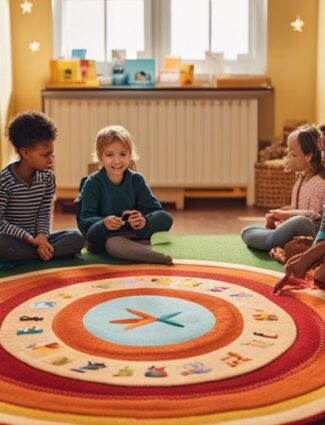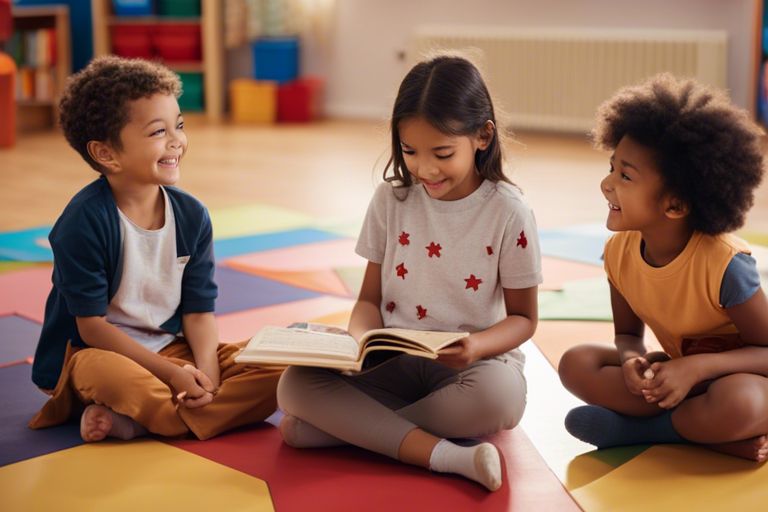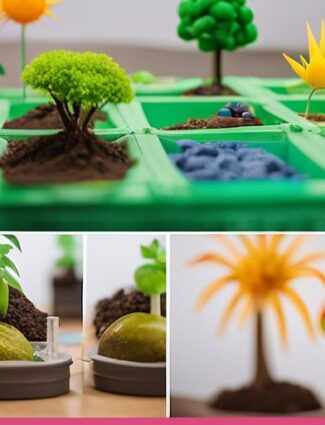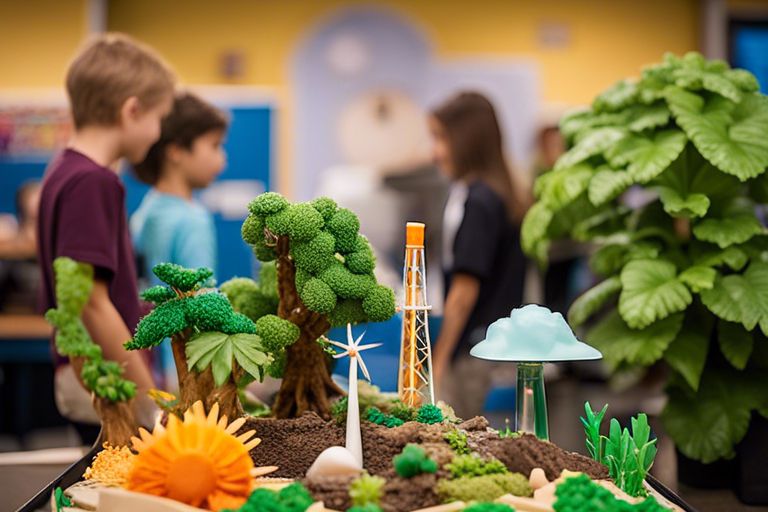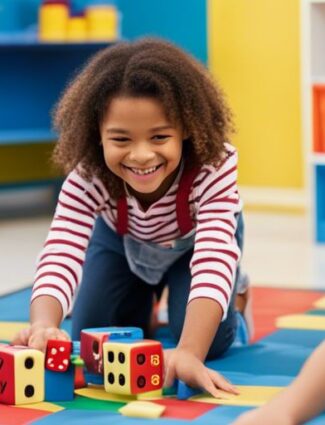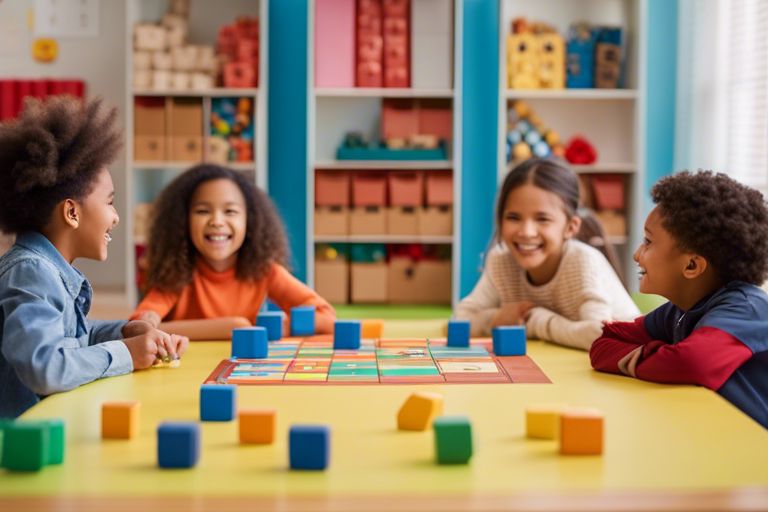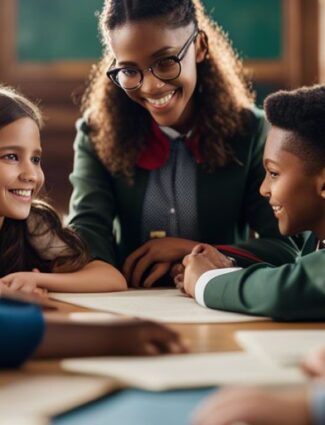Perplexed about how to enhance your kindergartener’s literacy skills in a engaging manner? Look no further! You are at the right place, as we bring you some exciting and proven methods to improve your child’s literacy at such a crucial age. From interactive storytime to educational games, there are numerous ways to encourage reading and writing skills in your little one. We will guide you through some engaging activities that are tailored for kindergarteners, ensuring that you have fun while building essential literacy skills. So, grab your pencils and get ready to embark on this adventurous journey of boosting kindergarten literacy with enjoyable activities!
Key Takeaways:
- Reading Aloud: Regularly reading aloud to kindergarteners can help improve their literacy skills by expanding their vocabulary and enhancing their listening and comprehension abilities.
- Interactive Storytelling: Engaging in interactive storytelling activities, such as asking questions and encouraging children to participate, can boost their literacy development and critical thinking skills.
- Phonics Games: Incorporating phonics games and activities can make learning about sounds and letters more enjoyable for kindergarteners, leading to better retention and application of literacy concepts.
- Writing Practice: Providing opportunities for kindergarteners to practice writing, such as through journaling or creative writing exercises, can improve their literacy skills and foster a love for writing.
- Word Recognition Activities: Implementing word recognition activities, such as sight word games and word building exercises, can help kindergarteners become more proficient readers and writers.
Laying the Foundations for Literacy
Some say that the journey to literacy begins long before a child enters the classroom. As a kindergarten teacher or parent, you have the power to lay the foundations for literacy and set the stage for success in reading and writing.
Understanding the development stages of literacy in kindergarteners
Understanding the development stages of literacy in kindergarteners is crucial for guiding them towards success. At this age, children are beginning to develop their understanding of print and sound, as well as their vocabulary and comprehension skills. It is important to provide them with a variety of literacy experiences to support their growth and development in these areas. By recognizing and supporting their individual progress, you can help them build a strong foundation for literacy.
How parents and educators can set the stage for success
As a parent or educator, you play a critical role in setting the stage for literacy success. By creating a literacy-rich environment at home or in the classroom, you can foster a love for reading and writing in kindergarteners. This can be accomplished through activities such as reading aloud, engaging in conversations, and providing exposure to a variety of print materials. By making literacy a natural and enjoyable part of their daily lives, you can help kindergarteners develop a strong foundation for literacy.
Interactive Read-Alouds
Assuming you want to make kindergarten literacy fun and effective, one strategy to consider is interactive read-alouds. This approach involves the teacher reading a book out loud to the class while actively engaging the students in the story through discussions, questions, and interactive activities. Interactive read-alouds not only help develop literacy skills but also promote critical thinking, comprehension, and vocabulary expansion.
The power of storytelling and discussion
When you engage in interactive read-alouds, you have the opportunity to captivate young minds through the power of storytelling. By discussing characters, events, and themes, you allow students to connect with the story on a deeper level. This not only fosters a love for reading but also enhances their listening and comprehension skills. Encouraging students to share their thoughts and opinions during the discussions helps them develop critical thinking and communication skills, setting a strong foundation for their literacy journey.
Selecting age-appropriate and engaging books
One of the keys to a successful interactive read-aloud is selecting age-appropriate and engaging books. When choosing books for your read-aloud sessions, consider the interests and experiences of your students. Look for books with vibrant illustrations, engaging storylines, and diverse characters that will capture their attention and spark their imagination. By selecting books that resonate with your students, you can create a memorable and impactful literacy experience.
Techniques for effective read-aloud sessions
During your interactive read-aloud sessions, there are several techniques you can employ to make the experience more effective. Use expressive and animated voice inflections to bring the characters and story to life. Pause at key moments to elicit predictions from the students or ask thought-provoking questions to prompt discussion. Incorporate props, visuals, or hands-on activities to further engage the students and enhance their understanding of the story. By utilizing these techniques, you can create a dynamic and enriching literacy experience for your kindergarten students.
Incorporating Phonics and Phonemic Awareness
Lastly, incorporating phonics and phonemic awareness activities into your kindergarten literacy program is crucial for developing strong reading and writing skills in young learners. Phonics instruction helps children understand the relationship between letters and sounds, while phonemic awareness focuses on the individual sounds, or phonemes, that make up words.
Fun phonics games for letter-sound association
Engaging in fun phonics games is an effective way to help kindergarteners develop their letter-sound association skills. For example, you can play “ABC Bingo” where children match letters on their bingo cards to the corresponding sounds called out by the teacher. Another fun game is “Letter Sound Scavenger Hunt”, where children search for objects that begin with a specific letter sound. These games not only reinforce letter-sound association but also make learning enjoyable for young learners.
Activities to develop phonemic awareness in young learners
It is important to incorporate activities that develop phonemic awareness in young learners. One effective activity is “Phoneme Segmentation”, where children are asked to break apart a spoken word into its individual sounds. Another activity is “Rhyme Time”, where children identify and generate words that rhyme. By engaging in these activities, children become more aware of the sounds that make up words, which is essential for their reading and writing development.
Balancing phonics with whole language approaches
While phonics instruction is essential, it is also important to balance it with whole language approaches. Whole language approaches emphasize understanding the meaning and context of a text, rather than just decoding individual words. By incorporating both phonics and whole language approaches, you can provide a well-rounded literacy education that addresses the needs of all young learners and promotes a deeper understanding of language and reading.
By incorporating phonics and phonemic awareness activities into your kindergarten literacy program, you are setting the foundation for strong reading and writing skills in your young learners. Fun phonics games and activities that develop phonemic awareness not only make learning enjoyable but also provide essential skills for literacy development. Balancing phonics with whole language approaches ensures a comprehensive approach to literacy instruction, helping children develop a deeper understanding of language and reading. How will you incorporate these strategies into your kindergarten literacy program?
Writing Activities that Entice Young Minds
Despite the challenges of teaching kindergarten students to write, there are numerous fun and effective ways to boost their literacy skills through writing activities. Whether it’s through play and creativity or integrating writing with reading and speaking, there are several strategies to engage and entice young minds to develop their writing skills.
Encouraging writing through play and creativity
One effective way to encourage kindergarten students to write is through play and creativity. By incorporating writing into activities such as drawing, painting, and storytelling, you can make writing more enjoyable and less daunting for young learners. One example is to have students create their own storybooks using drawings and simple sentences to express their ideas. This not only fosters creativity but also helps them develop their writing skills in a fun and interactive way. Additionally, incorporating writing into pretend play, such as playing “restaurant” or “post office,” can also encourage students to use writing as a form of communication and expression.
Integrating writing with reading and speaking
Another effective way to boost kindergarten literacy is by integrating writing with reading and speaking. By having students write about the books they’ve read or the stories they’ve heard, you can reinforce the connection between reading, writing, and speaking. For example, after reading a story, you can ask students to write or dictate a short summary of the story, or even create their own alternate ending. This not only helps them practice writing but also reinforces their understanding of the story and encourages critical thinking. Additionally, incorporating activities such as show and tell, where students can write and share about something meaningful to them, can help them develop their writing and speaking skills simultaneously.
Overall, incorporating fun and interactive writing activities into the kindergarten curriculum can greatly enhance literacy skills. By encouraging writing through play and creativity, as well as integrating writing with reading and speaking, you can effectively boost kindergarten students’ literacy while making the learning process enjoyable. Remember, the key is to make writing a fun and rewarding experience for young minds, setting a strong foundation for their future academic success.
The Role of Technology in Literacy
Technology plays a crucial role in literacy for kindergarten students. It provides interactive and engaging ways for children to develop their reading, writing, and communication skills. However, it is important to carefully evaluate and select educational technology tools to ensure they are effective and beneficial for your child’s learning.
Evaluating educational technology tools
When choosing educational technology tools for your kindergarten child, it is essential to consider their effectiveness and impact on literacy development. You should look for tools that provide personalized learning experiences, adaptable content based on your child’s skill level, and meaningful feedback to support their literacy growth. Additionally, consider the ease of use for your child and ensure the tools align with their learning goals and curriculum.
Incorporating apps and e-books into learning
Integrating educational apps and e-books into your child’s learning can provide interactive and engaging opportunities to develop literacy skills. Look for apps and e-books that offer age-appropriate content, multisensory experiences, and opportunities for your child to practice reading and writing. With the right selection, technology can enhance your child’s literacy development and instill a love for learning.
By carefully evaluating and selecting educational technology tools and incorporating interactive apps and e-books into your child’s learning, you can effectively boost their literacy skills in a fun and engaging way.
Creating a Print-Rich Environment
After all, if you want to boost literacy in kindergarten, one of the most effective strategies is to create a print-rich environment. This means surrounding your students with written language wherever they go. This can be achieved through intentional design and the use of visual cues and labels.
Designing spaces that promote a love for reading and writing
When setting up your classroom, think about how you can create spaces that inspire young learners to engage with literacy. Consider setting up a cozy reading nook with soft cushions and a variety of books, or a writing center with colorful writing materials. By creating inviting spaces, you are encouraging your students to explore and interact with literacy in a positive way.
The importance of visual cues and labels in the classroom
Visual cues and labels play a crucial role in helping kindergarten students develop literacy skills. By labeling different areas of the classroom, such as the block area, dramatic play area, and art center, you are providing your students with opportunities to see and interact with printed words every day. This can help them make connections between spoken and written language, and develop an understanding of print concepts. Additionally, you can use visual cues to support literacy instruction, such as displaying the alphabet, sight words, and vocabulary words related to thematic units.
By creating a print-rich environment in your kindergarten classroom, you are setting the stage for your students’ literacy success. These intentional design choices and the use of visual cues and labels can have a significant impact on your students’ motivation and ability to engage with reading and writing. What steps can you take to ensure your classroom promotes literacy in every corner?
Family Engagement and Community Resources
Despite the important role that schools play in teaching literacy, family engagement and community resources are crucial for a child’s overall literacy development. When families and communities are involved, children are more likely to have better academic outcomes and develop a love for reading and writing.
Tips for parents to support literacy at home
Encouraging literacy at home can be as simple as reading to your child every day or providing access to a variety of age-appropriate books. Actively participate in your child’s learning by asking open-ended questions about the story or having them retell it to you. Create a designated reading area in your home where your child can go to enjoy a book. Additionally, involve your child in everyday activities such as making a grocery list or reading a recipe. Assume that every moment is a potential learning moment and incorporate literacy into your daily routine.
Utilizing libraries and community programs
Libraries and community programs offer a wealth of resources to support literacy development. Most libraries offer storytime sessions, reading challenges, and homework help programs that can foster a child’s love for reading. Additionally, many community centers offer educational workshops and free tutoring services. Take advantage of these resources to provide your child with a well-rounded literacy education outside of the classroom.
Challenges and Strategies
However, despite the many benefits of boosting kindergarten literacy, there are inevitably challenges that can arise. It’s important to be prepared to address these challenges in order to effectively support literacy development in young children. For valuable strategies to help overcome these challenges, you can check out 8+ Ways to Support Literacy Skills Development for additional insights.
Identifying and addressing common literacy hurdles
When it comes to boosting kindergarten literacy, it’s crucial to be aware of common hurdles that children may face. Some may struggle with letter recognition, while others may have difficulty with phonemic awareness. It’s important to identify these challenges early on and provide targeted support to address them. By using individualized assessments and providing tailored interventions, you can help each child overcome their specific literacy hurdles, setting them up for success in their reading and writing journey.
Adapting teaching methods for diverse learning styles
Another challenge in boosting kindergarten literacy is accommodating the diverse learning styles of young children. You may have visual learners, auditory learners, and kinesthetic learners all in the same classroom. Adapting your teaching methods to incorporate a variety of modalities can help ensure that you are effectively reaching every child. By incorporating multisensory activities and interactive games, you can engage children with different learning preferences, making the learning process more enjoyable and effective for each student.
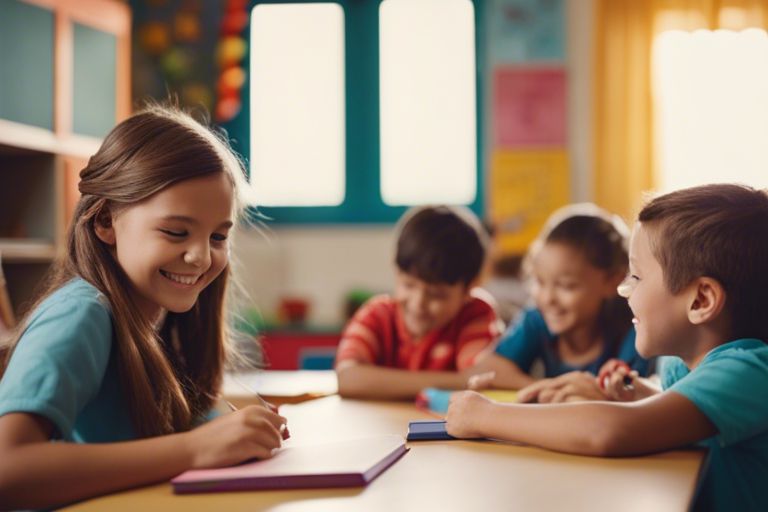
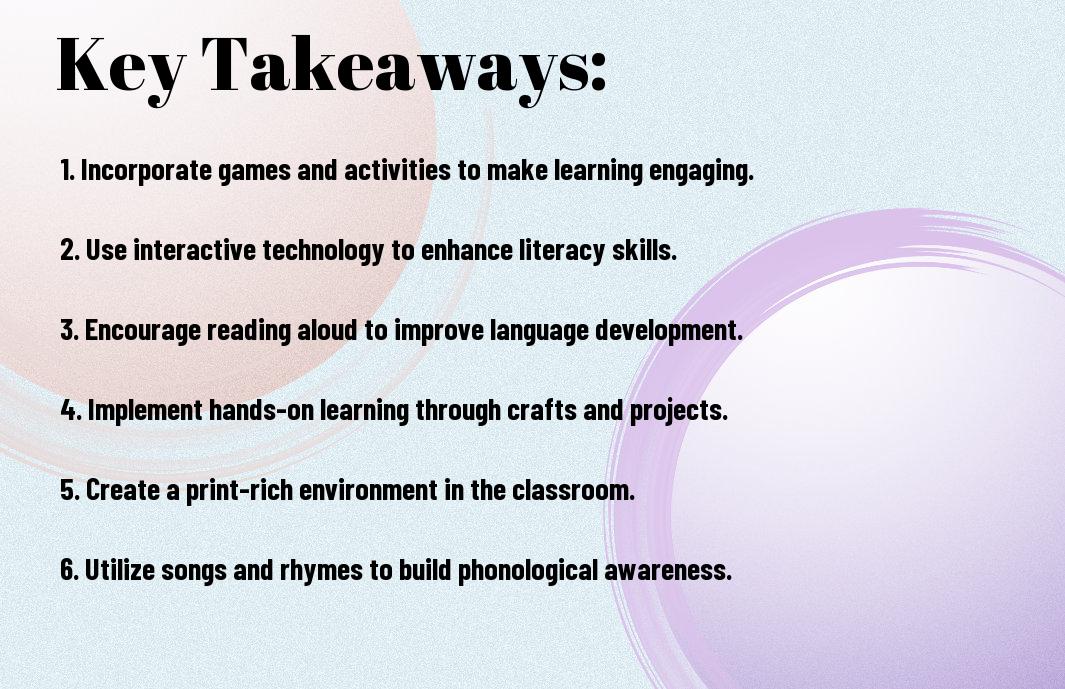
Conclusion
Taking this into account, it is important to remember that literacy skills are crucial for your child’s academic success. By incorporating fun and effective ways to boost kindergarten literacy, you can help them develop a strong foundation for reading and writing. Whether it’s through interactive games, storytelling, or incorporating literacy into everyday activities, there are plenty of enjoyable ways to nurture your child’s literacy skills. By making literacy engaging and enjoyable, you can instill a love for reading and writing in your child from an early age, setting them up for success in the future.
FAQ
Q: What are some fun and effective ways to boost kindergarten literacy?
A: Some fun and effective ways to boost kindergarten literacy include incorporating storytelling, utilizing educational games and activities, and encouraging reading at home. Storytelling can help improve language comprehension and vocabulary, while educational games and activities can make learning to read and write more engaging. Additionally, encouraging reading at home, such as through bedtime stories, can instill a love for reading from a young age.
Q: How can parents help support kindergarten literacy at home?
A: Parents can support kindergarten literacy at home by reading with their children regularly, providing a print-rich environment, and engaging in conversations about stories and books. Reading with children helps develop their language and literacy skills, and a print-rich environment, such as having books readily available, can further nurture their interest in reading. Engaging in conversations about stories and books can also enhance comprehension and critical thinking skills.
Q: What role does phonics play in kindergarten literacy development?
A: Phonics plays a crucial role in kindergarten literacy development as it teaches children to understand the sounds that letters make, leading to improved reading and spelling abilities. By learning phonics, children can decode words, recognize patterns in language, and become more confident readers and writers. Incorporating phonics instruction into literacy activities can help children build a strong foundation for reading and writing.

